At the Augmented & Virtual Reality roundtables at GDC 2015, there was consensus that moving a player through space made them uneasy. While in the future, I’m sure we’ll discover interesting tricks to ease the transition, what if we aren’t worried about that, and instead an entire interactive narrative experience happens in a single space?
This multi-part series examines inspirations for interactive narrative design in small spaces. These reviews are going to at times sound oddly mechanistic, as the goal is to focus on moments of potential narrative agency and player interaction. There is a separate movement towards Virtual Reality film, where one would semi-passively take in narrative in a virtual environment, but, as usual, I’m more interested in the interactive stuff.
In this part of our ongoing study, we look at 3 films that take place on boats: Life of Pi, Kon-Tiki, and Lifeboat.
Life of Pi
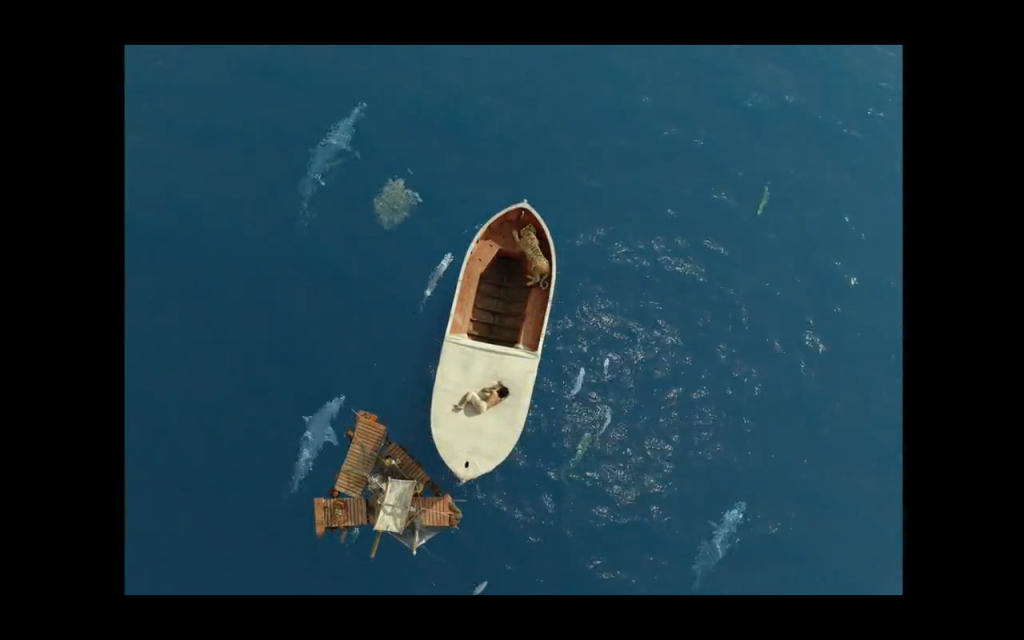
Life of Pi is the story of a young, religious Indian man shipwrecked on a lifeboat with several dangerous animals, including a Bengal tiger. All the other animals die early in the narrative, leaving just the tiger and the young man aboard the boat. Scared of the tiger, the young man builds a separate raft out of paddles and life jackets, but still connected to the main boat by a rope.
Kon-Tiki
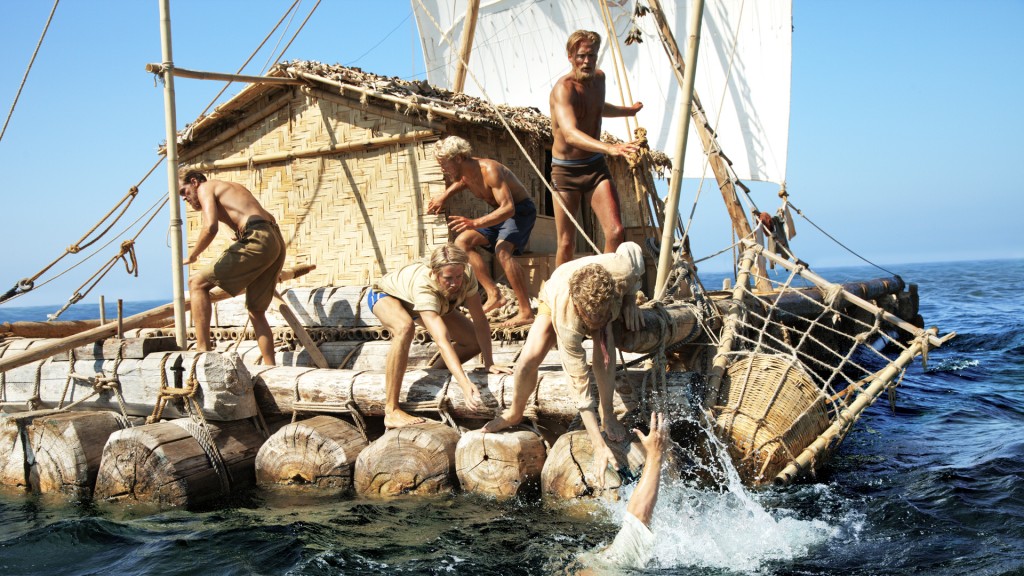
Kon-Tiki is a documentary of the 1947 building and sailing of a raft from Peru to Polynesia by 6 Norwegians. The goal of of the voyage is to prove that it was possible for ancient Peruvians, using only a raft, to colonize Polynesia, in opposition to generally accepted theory that Polynesians came from their west.
Lifeboat
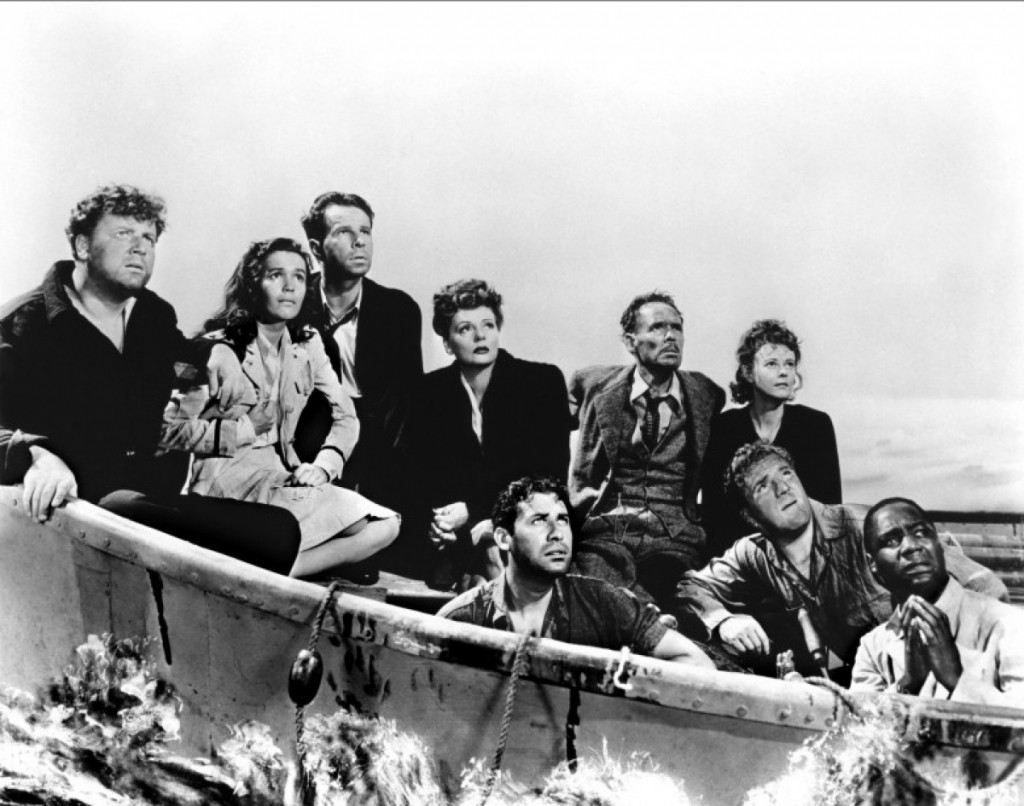
Lifeboat, another small-space film by Alfred Hitchcock, is set during World War II, a collection of characters from Allied countries shipwrecked aboard a lifeboat, with one German. Much of the conflict of the crew comes from what to do with the German, especially in light of worsening conditions from lack of food or shelter.
TALKING POINTS:
Both Kon-Tiki and Life of Pi have extended preparatory sequences outside the boat for exposition. During the time on the boat, Life of Pi alternates to several decades in the future, where an author is interviewing the protagonist in his living room. The third small space in Life of Pi is a hospital room where the protagonist is again interviewed by representatives of a shipping company. To be much more pure for our purposes, Lifeboat takes place entirely on the boat itself, and I would say the position of the camera never goes more than 10 feet from the boat’s centre, there are not even any sort of establishing shots. Above perspective shots are common in Kon-Tiki and Life of Pi, often to highlight the isolation of the boat in a large ocean.
An initial premise of “shipwrecked” is a convenient mechanic, similar to the amnesia trope common in interactive media – it is plausible enough to the audience, yet allows the creator of the work to setup arbitrary arrangements of characters (who wouldn’t normally associate), supplies and physical environment. The confined space is then set to bake and interesting interactions between characters that may occur. These interesting interactions can be easily avoided in real life, as there’s space to simply walk away, relatively infinite resources, and authorities to appeal to. Unlike the other two works, Kon-Tiki’s crew is intentionally aboard the ship, though eventually we learn they all have surprisingly personal reasons for committing to a voyage whose success is uncertain.
Lifeboat takes place over a few days, but long enough for food and water supplies to become short, and the crew of the boat to lose hope. Kon-Tiki and Life of Pi take place over months, the crew going through several stages of increased hope and despair. A major point of discussion among the crew is what to do with the German, with people either wanting to kill him, and some wanting to keep him as a prisoner of war. It is curious that the latter treat the decision as outside their authority, as the universe is larger than the boat, and their confinement is temporary. Some authority outside this pocket universe will make the decision, later, and somehow that is more ethical than making the decision in the present.
Unlike the confined spaces of the first part of this series, which felt like prisons, the boats in this part are more nuanced. They are prisons, but they are also life-giving. The sea around them is not immediately threatening, and in other circumstances the protagonists would go for a swim, but the boat is that which allows them to stay alive. Few of the characters are afraid of water, with the notable exception of the captain of the Kon-Tiki, who is unable to swim. It seems this is meant to underline his conviction that their voyage will be a success.
The primary actions of people in Kon-Tiki is to maintain the boat itself. There is actually a great deal of work to be done in such a small space, and it is rather inspiring to an interaction designer, from checking the security of the lashed-together logs, to doing a walk around the boat to look for fish, to check lines, to go inside to look at maps. On the other hand, most of the actions in Lifeboat are interpersonal, from trying to guess the contents of others’ pockets, to performing an amputation, to breaking up a fight, to tying suicidal people down. In Life of Pi, it is a mix of both, the tiger is a threat the protagonist must maneuver around and avoid, while maintaining the lifeboat and his sub-life-boat.
Curiously, the protagonist of Life of Pi must keep the tiger well-fed, as otherwise he is afraid the tiger will try to swim out to him in his little raft out of desperation. So, he fishes, and collects fresh water in a tarp on the boat. This is even more interesting, as several times during the exposition, it is pointed out that the protagonist and his family are strict vegetarians. So he must kill animals to feed another being, so it won’t kill him. This is fairly emotionally intense for the protagonist.
However, the tiger does actually jump out, and the protagonist jumps aboard the lifeboat. Now their positions are inversed, and the tiger is unable to get aboard, but the protagonist takes pity on him, feeling the need to still rescue him.
The protagonist explicitly states later that taking care of the tiger, the constant danger, kept him alive, and this subtly ties into the religious themes in the move later.
Changes over time are shown differently: In Lifeboat, people become more lethargic, sunburned, and familiar – in one case, a marriage proposal and in another case two people who were formerly strangers are straight-up making out in the corner of the boat. In Life of Pi, the protagonist and tiger get unnervingly thin, while supplies dwindle down. The protagonist also mark tallies on the side of the boat (side note: marking a day tally would be a cool save mechanic). To contrast, the passage of time for the Norwegians in Kon-Tiki isn’t presented as dire; they merely get sweet manly blonde sea-beards.
One interesting spatial feature of boats is that interesting things can happen underneath. In both Life of Pi, and Kon-Tiki, something in the water dramatically disappears under one side and then reappears on the other. In both cases, there is a tense scrambling as people run to the other side of the environment. In Kon-Tiki, there is an insanely intense action/combat/rescue sequence where one of the crew members falls over board, while covered in blood, and sharks are around. This is especially notable as all of the 5 people still aboard are engaged in something important simultaneously (fetching a harpoon, steadying a line, pointing at the shark, etc.). There is lots of juicy mechanical stuff to do.
Both Life of Pi and Kon-Tiki had a little over half an hour of exposition outside the small space before they got down to business (from the viewpoint of this review). Kon-Tiki could likely have started directly on the boat, but I feel it would be hard for Life of Pi’s narrative for this to. However, most expository scenes happen without much motion (next to a tiger cage in a zoo, around a family dinner table, in a cafeteria), so it would be feasible to establish the experience of the protagonist with cuts in between.
Stray Notes:
Life of Pi
– Hyena is an aggressive, punk element, though it just seems to be alarmed (it panic-vomits). But then, in a horrifying turn, it eats the Zebra alive, while the protagonist looks on, helplessly, in fear of being hurt himself. The Zerba carcass is left half-eaten on the boat, horrifyingly.
– Through agility, the orangutan avoids the same fate, initially, but then is killed by the Hyena as well.
– Protagonist finds an adorably illustrated manual of the boat. He returns to this many times later, and it contains much practical advice for surviving in the boat for a long period of time. He mentally adds his own passages, trying to normalize his absurd situation (e.g. [If you are sharing the boat with a giant tiger…])
– The protagonist discovers the Tiger can get seasick, and does Pavlovian training with a whistle and turning the boat away and into the waves to moderate how much it rocks. The goal being to have the tiger training the tiger to hate the harsh whistle.
– Both the tiger and the protagonist get noticeably thinner over time. Ways to show change without motion through space, like this, are important to note.
– Makes marks on the side of the boat to pass the days.
– Nice scene where both the protagonist and the tier try to catch parts of a school of flying fish that pass by, fighting for them. Here, foreign elements are invading the space. Finally, the protagonist breaks down and eats fish meat.
– Seeing the tiger, who is normally an extremely alarming badass, terrified of water during a storm, is very disturbing. It feels like it is Not How Things Should Be. Wrong, Against the nature of things. The canary in the coal mine for how fucked things actually are. Later, even when not in the storm, the increasingly docility of the formerly extremely dangerous tiger shows just how fucked things are.
– (Spoilers) of course, all the animals on board are allegories for real people who are at each other’s throats. This is a disgusting, messy truth, less like a fairy tales than if they were all animals, even though the amount of death and suffering is the same. As the sole witness of what happened, it is the responsibility of the protagonist to tell the story, but also to suffer the story. The telling is the suffering is the living.
Kon-Tiki
– The raft has a small interior, which is a nice contrast to the outside, which acts as a sort of wraparound verandah. People on opposite sides of the raft are unable to see each other directly, which could provide some environmental variety (and privacy).
– There is a strong concern that the boat itself will not survive the trip. The setting as a flawed character, who will likely die, is a strong theme. In fact, when they finally do arrive in Polynesia, it is a crash landing, and the raft falls apart, having served its purpose.
– At one point, a smaller raft is drifted away from the main rift for the purposes of photography. How crazy lonely that would feel, to leave your already small space.
Lifeboat
– At the beginning, the lifeboat is surrounded by the wrecked contents of a ship, and the crew is grabbing a bunch of random items out of the water if they want it! A tennis racket has been added to your inventory! A camera! Random shit you don’t need, but it’s floating by, so might as well grab it! People are excited about the stuff they saved from the wreck (starting inventory). One guy managed to save some cigars, which he is proud of.
– Another failing raft comes over and dumps its occupants on board. Both the inventory grabbing and the second raft are nice ways to add stuff to an otherwise static environment.
– One lady comes aboard, shellshocked from a previous incident, with a drowned baby she refuses to let go. The crew conspires (out of earshot, which is damn difficult on a tiny lifeboat) to get rid of the baby when she is asleep. SMALL SPACE DRAMA CAN GET PRETTY REAL.
– The mother jumped overboard over night, apparently. It is apparent from the taut rope overboard. May be possible someone witnessed it, but didn’t stop her.
– One African American on board. He’s asked his opinion on the German, and quips “Oh, I get to vote too!?”. Ah, early US racism comedy.
– British guy has previous shipwrecked experience. Was on there for 43 days, but less optimistic about this one, given lack of supplies. Has that stout British upper air sense of self reliance and keeping calm (don’t say or think it).
– Soon-to-be amputee quickly downs a ton of alcohol as they prepare to cut off his leg. Begins laughing, hitting on everything with legs. Which includes in asking for a kiss from the journalist, just after doing a sad monologue about how his girlfriend back home may not take him back if he has a missing leg. It’s pretty cute.
– Like 5 people have to keep their hands around a flame to keep it lit enough to heat up the amputation knife. A nice physical body cooperation moment.
– One woman’s sense that their chance of survival is unclear makes her want to find someone on the crew to confess that she had an affair with a married man before. No one cares.
– The German has a secret compass. An inventory item you can only use while out, but need to hide from other crew members in close proximity, is pretty darn interesting.
– Two guys start playing poker, purely based on IOUs of money, on cards they made themselves by tearing paper and writing ink on it. The IOUs are carved in the wood of the boat with a knife. The amounts of money gets insane, like $80,000, based on the IOU marks. At a critical moment, a bunch of cards are blown overboard, mostly the hand of the guy claiming to be the winner. A fight breaks out.
– (Spoilers) Initially, the one German survivor is excused of his actions because he’s “just some German”. Later, they find out he is the captain of the U-boat. Does this make him more responsible? No, he was just following orders, like everyone else. But then it turns out he was hiding food, and a compass, and steering the boat in a wrong direction! And then, at the end, another, extremely young German comes aboard. Should we trust him or is he just a kid?
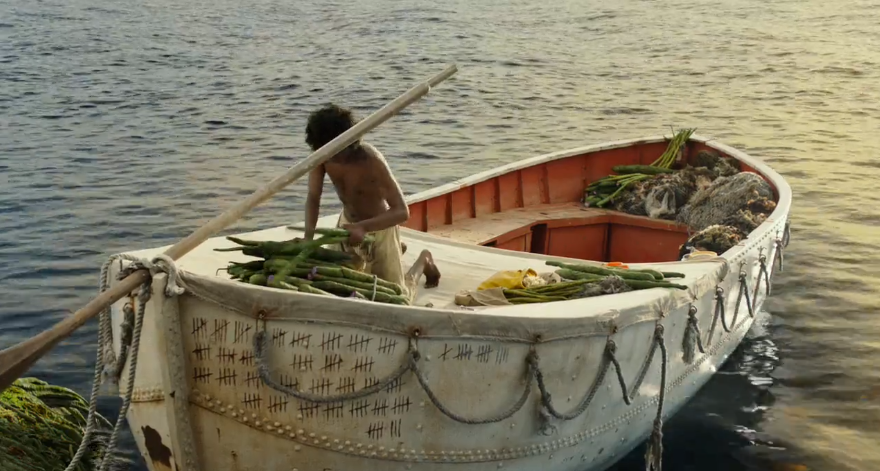
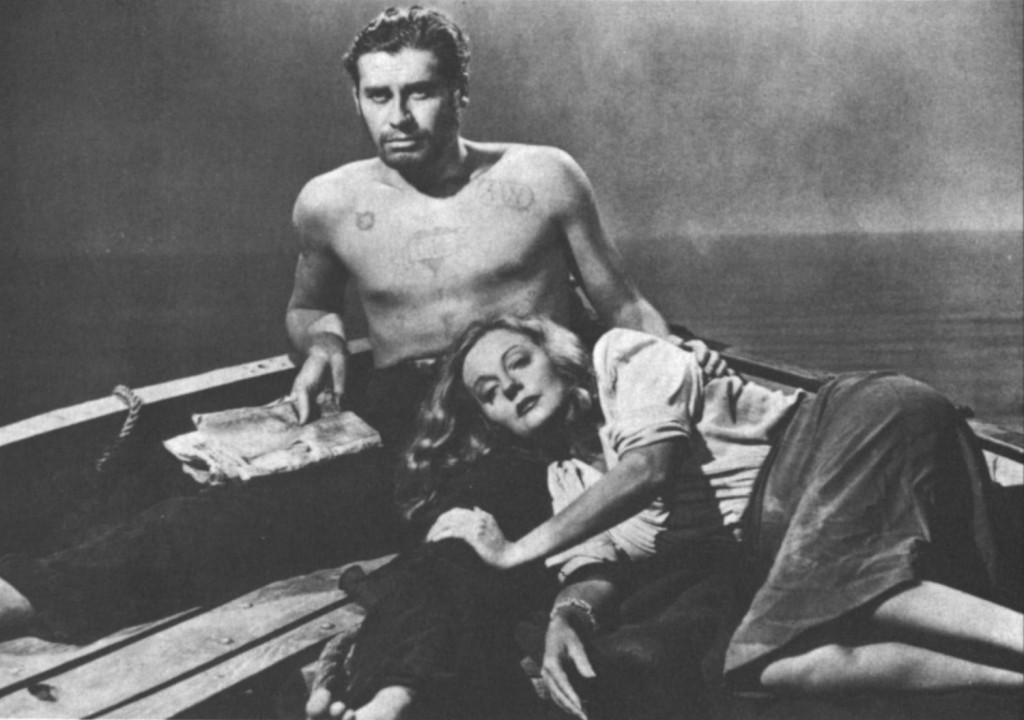
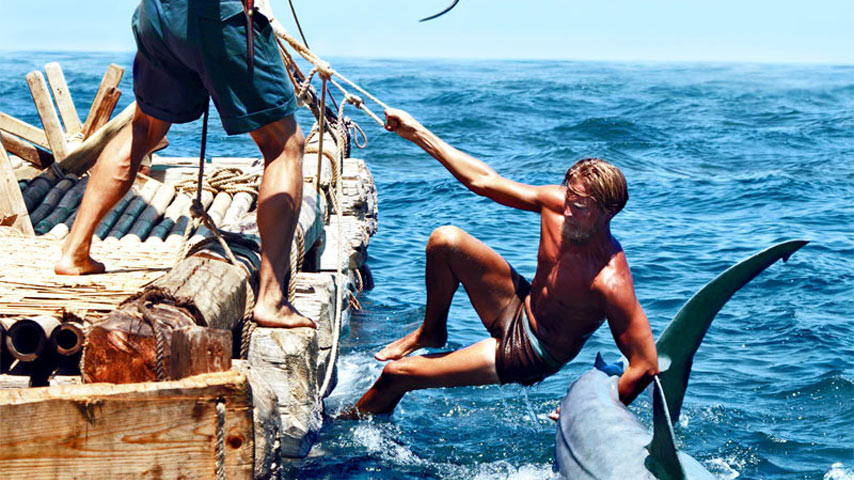
One response to “Studying Narratives in Small Spaces, Part 2: Boats”
The ultimate narrative in small spaces, Burried is a great movie all set in a box. https://www.youtube.com/watch?v=aRQ0oqFBoP4